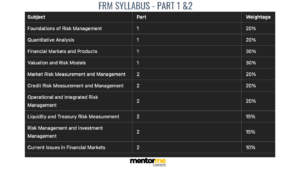Last updated on December 21st, 2022 at 04:04 pm
What is Basel III?
Basel III, also known as the Third Basel Accord or Basel Standards, is a set of financial reforms that was developed by the Basel Committee on Banking Supervision (BCBS). The aim was to strengthen regulation, supervision and risk management within the banking industry. On a more granular level, Basel III seeks to strengthen the resilience of banks in order to reduce the risk of system-wide shocks and prevent future economic meltdowns. Due to the impact of the 2008 global financial crisis on banks, Basel III was introduced to improve the banks’ ability to handle financial stress. The accord aims to prevent banks from hurting the economy by taking more risks than they can handle.
Understanding Basel III
The BCBS was established in 1974 by the central bank governors of the Group of Ten countries, as a response to disruptions in financial markets. The committee was setup up so that member countries can deliberate on banking supervision matters. The BCBS ensures financial stability by strengthening regulation, supervision and banking practices globally. The committee was expanded in 2009 to 27 jurisdictions, including Brazil, Canada, Germany, Australia, Argentina, China, France, India, Saudi Arabia, the Netherlands, Russia, Hong Kong, Japan, Italy, Korea, Mexico, Singapore, Spain, Luxembourg, Turkey, Switzerland, Sweden, South Africa, the United Kingdom, the United States, Indonesia, and Belgium.
Key Principles of Basel III
- Minimum Capital Requirements:
Basel III increased the minimum capital requirement for banks from 2% to 4.5% of common equity. An additional 2.5% buffer capital requirement was also imposed which brings the total minimum requirement to 7%. The buffer capital can be used by the banks during financial stress. As of 2015, Tier 1 capital requirement increased from 4% to 6% in Basel III. The 6% comprises the 4.4% common equity and an extra 1.5% of additional Tier 1 capital. The requirements were to be implemented in 2013 but the implementation has been postponed several times. The banks now have until January 1, 2022, to implement the changes.
- Leverage Ratio:
A non-risk-based leverage ratio was introduced in Basel III as a backstop to risk-based capital requirements. Banks must mould a leverage ratio in excess of 3%. This leverage ratio is calculated by dividing the Tier 1 capital by the average total consolidated assets of a bank.
- Liquidity Requirements:
Two liquidity ratios were introduced in Basel III – The Liquidity Coverage Ratio and the Net Stable Funding Ratio. The Liquidity Coverage Ratio requires banks to hold sufficient highly liquid assets that can withstand a 30-day stressed funding scenario as specified by the supervisors. The Liquidity Coverage Ratio mandate was introduced in 2015 at only 60% of its stated requirements and is expected to increase by 10% each year till 2019 when it takes full effect. The Net Stable Funding Ratio requires banks to maintain stable funding above the required amount of stable funding for 1 year of extended shares.
Impact of Basel III
The 7% minimum capital amount will make the banks less profitable. Most banks maintain a higher capital reserve in case of any financial distress. They will be required to hold more capital against assets, which will reduce the size of their balance sheets. A study by the Organization for Economic Cooperation and Development in 2011 revealed that the medium-term effect of Basel III on GDP would be -0.05% to -0.15% annually. This will require the banks to increase their lending spreads as they pass the extra costs onto their customers. The liquidity ratios will affect the operation of the bond market. The implementation of Basel III will affect the derivatives markets, as more clearing brokers exit the market due to higher costs. On the contrary, there was only a 2% change in derivative trading, making it more attractive to banks.




